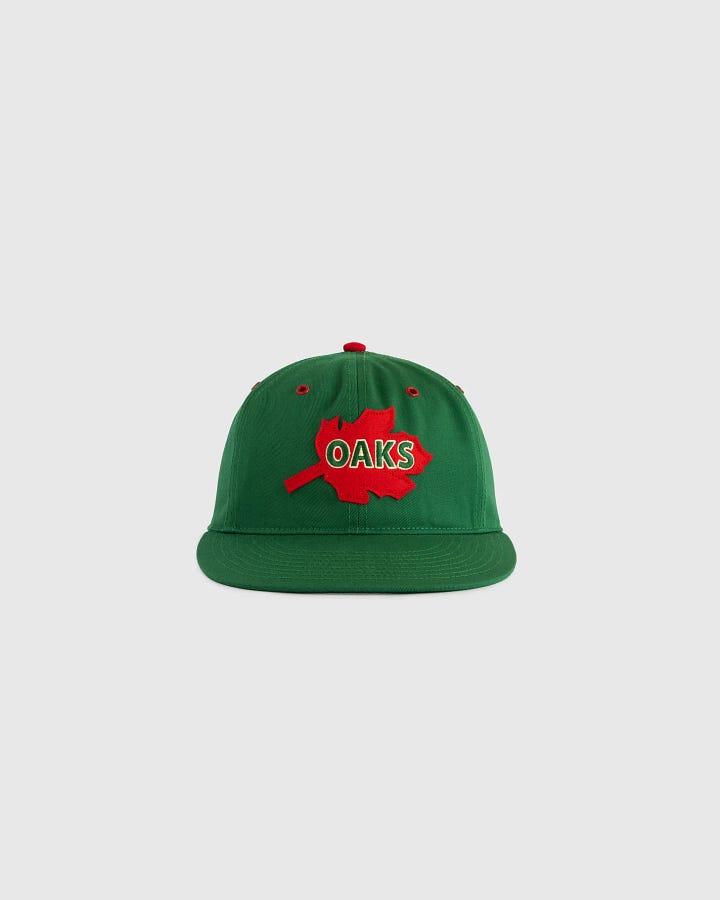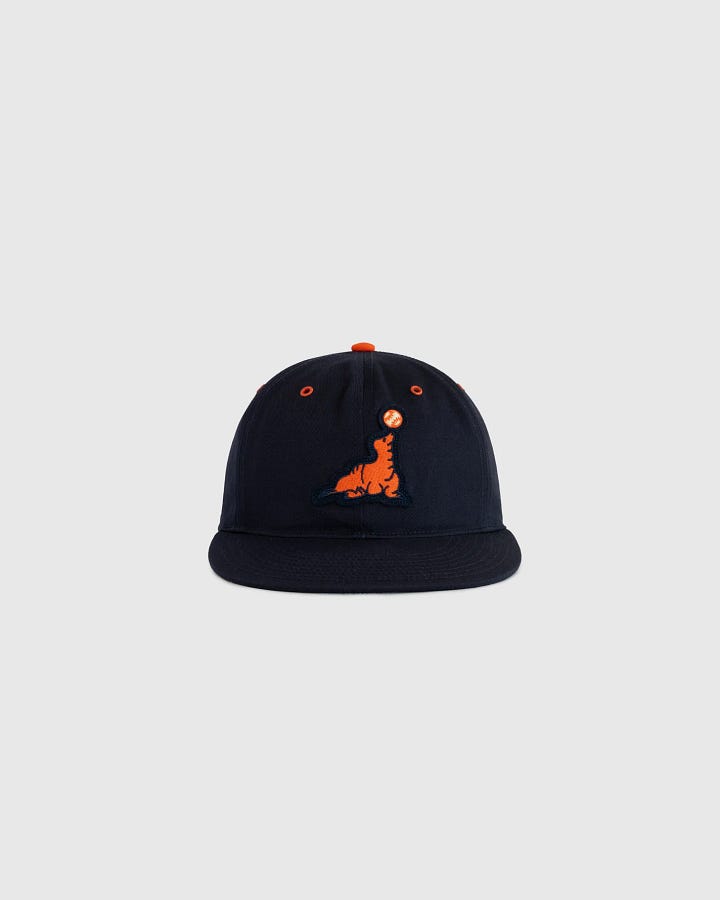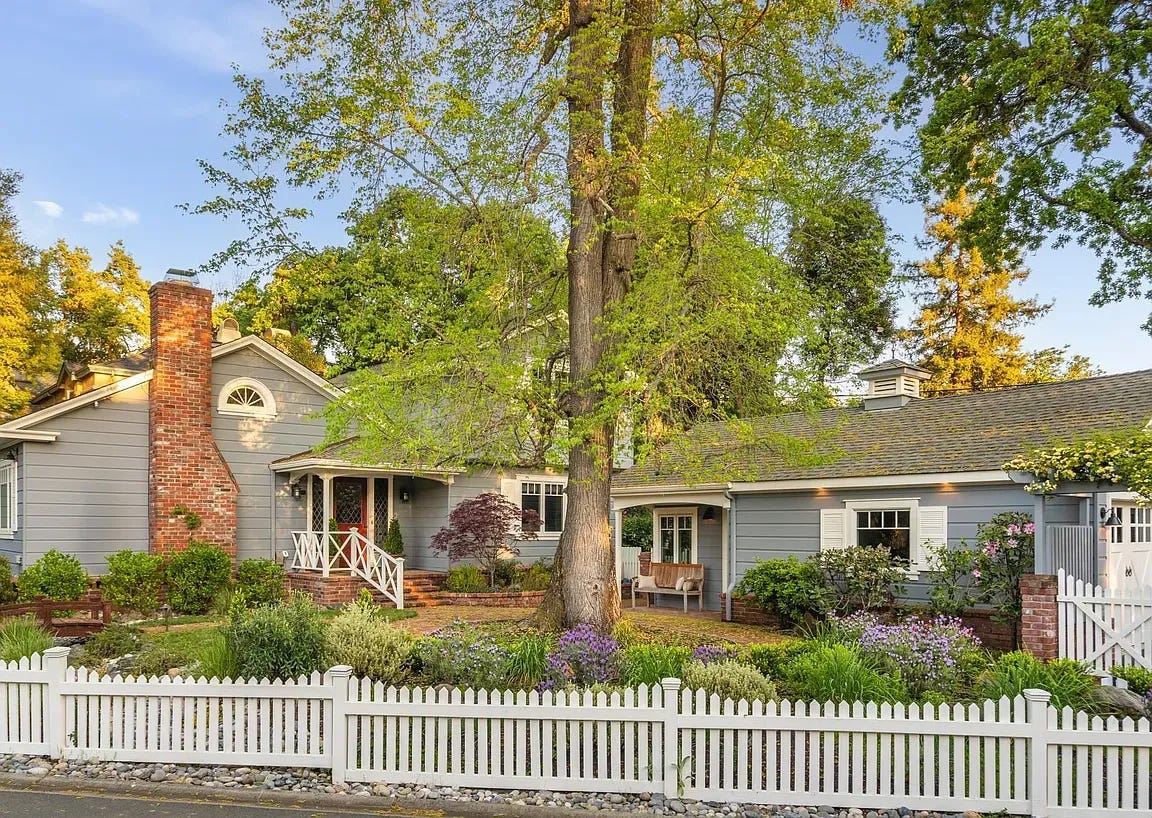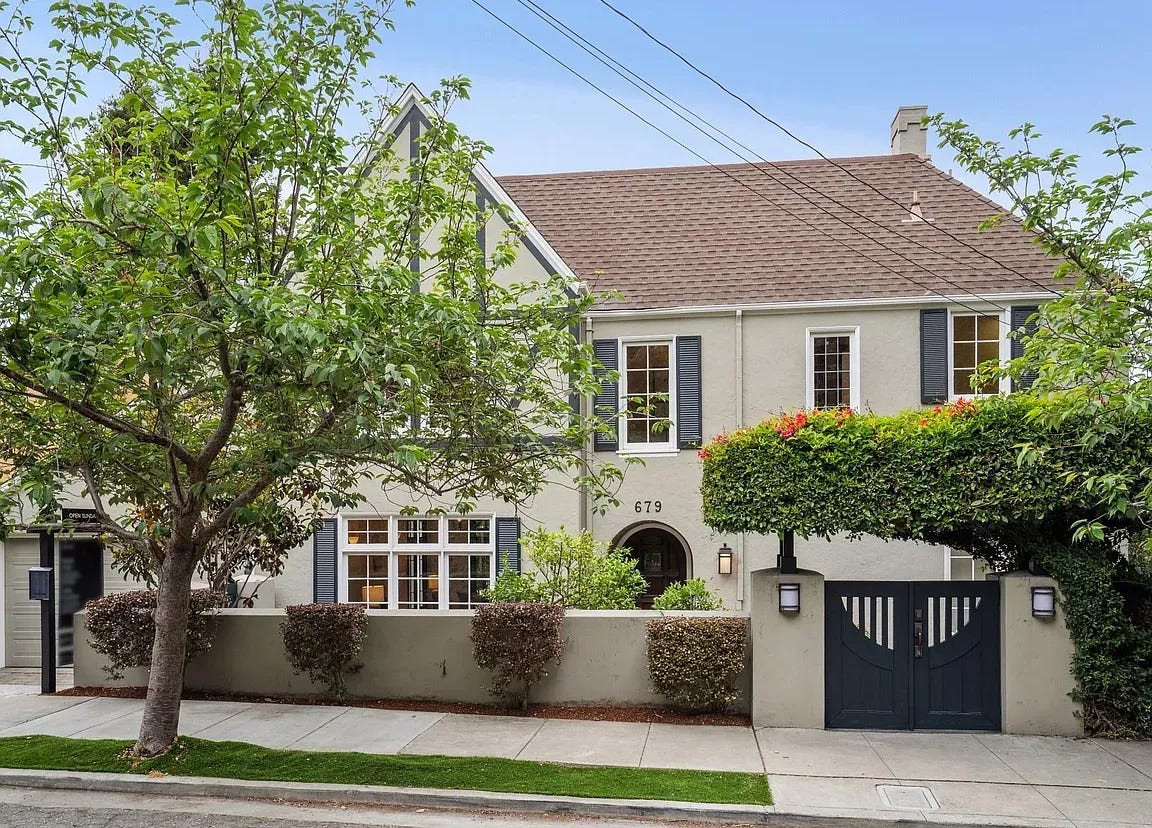Issue #28: A Brief and Incomplete History of Professional Bay Area Baseball
My short and scrappy history of professional baseball in the Bay Area, five historic homes currently for sale, and a night of live music at Walnut Creek's Retro Junkie.
The Silvert Lining is a place where I talk about real estate, cool homes for sale, things I’m looking forward to, and how I’ve been spending my time. In addition to this newsletter, I also post regularly on Instagram. You can follow me at Dan Silvert Homes. If you would like to meet with me to discuss your home search, you can schedule time here.
For casual baseball fans, the beginning of professional baseball on the West Coast is often considered the San Francisco Giants’ opening day game against the Los Angeles Dodgers on April 15, 1958. If you’re into baseball and local history, you might reference the Pacific Coast League’s founding in 1903. But baseball has actually been played professionally in the Bay Area since the 1860s.
The Early Years: 1860s to 1902
Baseball, as we know it today, gained popularity in the United States in the 1840s and 1850s. During the Civil War, soldiers would play organized games during down time. In San Francisco, where the population had exploded during the Gold Rush, baseball diamonds were being built across the city as recreational teams sponsored by local businesses started forming leagues. In 1869, baseball’s first professional team, the Cincinnati Red Stockings, traveled via railroad to San Francisco to play a series of games against local teams. In one of the games, the Red Stockings toppled their opponent 58-4.
As baseball continued to grow in popularity, California’s first professional league, the Pacific Baseball League, started with four teams in San Francisco in 1878. A year later, the rival California League was formed. By 1887, the Pacific Coast League’s first iteration debuted.
The Pacific Coast League’s Heyday: 1903 to 1958
The more famous and successful Pacific Coast League began in 1903 with six teams: Los Angeles Angels, Oakland Oaks, Portland Beavers, Sacramento Senators, San Francisco Seals, and Seattle Indians. The league grew in the 1930s to include the Hollywood Stars and San Diego Padres. Notable Pacific Coast League alums include Joe DiMaggio (San Francisco Seals), Ted Williams (San Diego Padres), and local legend Lefty O'Doul (San Francisco Seals).
The Pacific Coast League was where Major League Baseball (MLB) players started or ended their careers. Post-WWII, the Pacific Coast League was given the official classification of being a step above Triple-A (the highest level in the minor leagues). The Pacific Coast League had ambitions to become the third major league as the American League and National League did not have teams on the West Coast.
The advent of televised MLB games meant that fans could watch their favorite teams play from the comfort of their homes and fewer fans were attending local Pacific Coast League games. The Giants relocating to San Francisco and the Dodgers relocating to Los Angeles sealed the fate of the Pacific Coast League.
With competition from MLB teams, the Los Angeles Angels, Hollywood Stars, and San Francisco Seals relocated to smaller markets. The Oakland Oaks followed with a move to Canada and were renamed the Vancouver Mounties. As MLB introduced teams in more cities, the Pacific Coast League was permanently relegated to the minor leagues operating in smaller markets. The Pacific Coast League still exists as MLB’s West Coast Triple-A league.
Ebbets Field has a nice selection of replica Pacific Coast League clothes and hats. I’m partial to this Oaks jersey and cap.


The Giants Move West: 1958
Founded in 1883 as the New York Gothams, the New York Giants moved west in 1958. The Brooklyn Dodgers (originally named the Brooklyn Bridegrooms) moved to Los Angeles the same year, creating a natural rivalry. When the newly relocated teams squared off for the first time at San Francisco’s Seals Stadium, the Giants won 8–0.
The Giants almost moved to Tampa Bay, Florida in 1992 when then owner Bob Lurie was upset taxpayers didn’t want to fund a new stadium for the team. Tampa Bay had a new stadium but no team. Ultimately, Lurie’s proposed sale to a group of Florida investors was rejected by the other National League owners. In 1993, a group of Bay Area investors purchased the Giants with the intent to keep them in San Francisco and build a new stadium without using public funds. In 2010, the team won their first World Series title since moving to San Francisco.
The A’s Move West: 1968
The Athletics were founded in Philadelphia in 1901, moved to Kansas City in 1955, moved again to Oakland in 1968, and moved yet again (temporarily?) to Sacramento in 2025.
The move to Oakland ushered in the Swingin' A's era (1971–1975) of World Series championships and devoted fans. Owner Charlie Finley had a penchant for unique marketing, but there was acrimony off the field involving his (mis)treatment of players. Due to financial issues stemming from his divorce, he had to sell the team.
In 1980, the A’s almost moved to Denver before Walter A. Haas, Jr., of the Levi’s family, bought the team with the promise to stay in Oakland. The A’s experienced a renaissance in the Bash Brothers era winning the World Series against the Giants in 1989.
In 2005, John Fisher, heir to the Gap fortune, purchased the A’s. He has been trying to move the team out of Oakland since day one, and finally moved them to Sacramento to play at a Triple-A stadium for the 2025 season. The eventual goal (delusional pipe dream?) is to move the team to Las Vegas in a new stadium that is estimated to cost between two and three billion dollars. You can read my takes on the current state of the A’s here.
If you also like studying the history of the Bay Area, the Oakland History Center is hosting the All the News That’s Fit to Build: Local News Dioramas contest this summer. To participate, you need to create a diorama based on a newspaper article about Oakland or the East Bay and bring it to the Oakland History Center or Oakland’s Main Library between July 21 and August 2, 2025. All dioramas submitted will be on display at the Main Library from August 9 to November 29, 2025. I am seriously considering creating and submitting a diorama based on an issue of the Silvert Lining.
Since professional baseball has been played in the Bay Area for more than a century, I thought it would be fun to feature homes that are around a century old and currently for sale in the East Bay.





Let me know if you are looking for a new home and I can create a customized search based on your wants and needs that will email you homes that meet your search criteria. You can schedule time with me to discuss your search for a new home or selling your current home by emailing me at DanSilvertHomes@gmail.com. DRE #01963734
On Saturday night, I saw my friend Daniel Foster's Mars Volta tribute band Re-Loused at Retro Junkie in Walnut Creek. The Mars Volta is a progressive rock band that rose from the ashes of At the Drive-In and is known for their explosive blend of psychedelic rock, punk energy, Latin rhythms, jazz fusion, and experimental noise. I hear salsa, jazz, punk, the Beatles and Led Zeppelin as influences, and maybe some Frank Zappa and Pink Floyd as well.
Dan is a Berklee College of Music graduate. He and his entire band are great musicians, and the show made me want to explore the Mars Volta's catalog more. I also got to catch up with our mutual friend and my college lacrosse teammate/renaissance man, Blake Jamieson, which was awesome as always.





